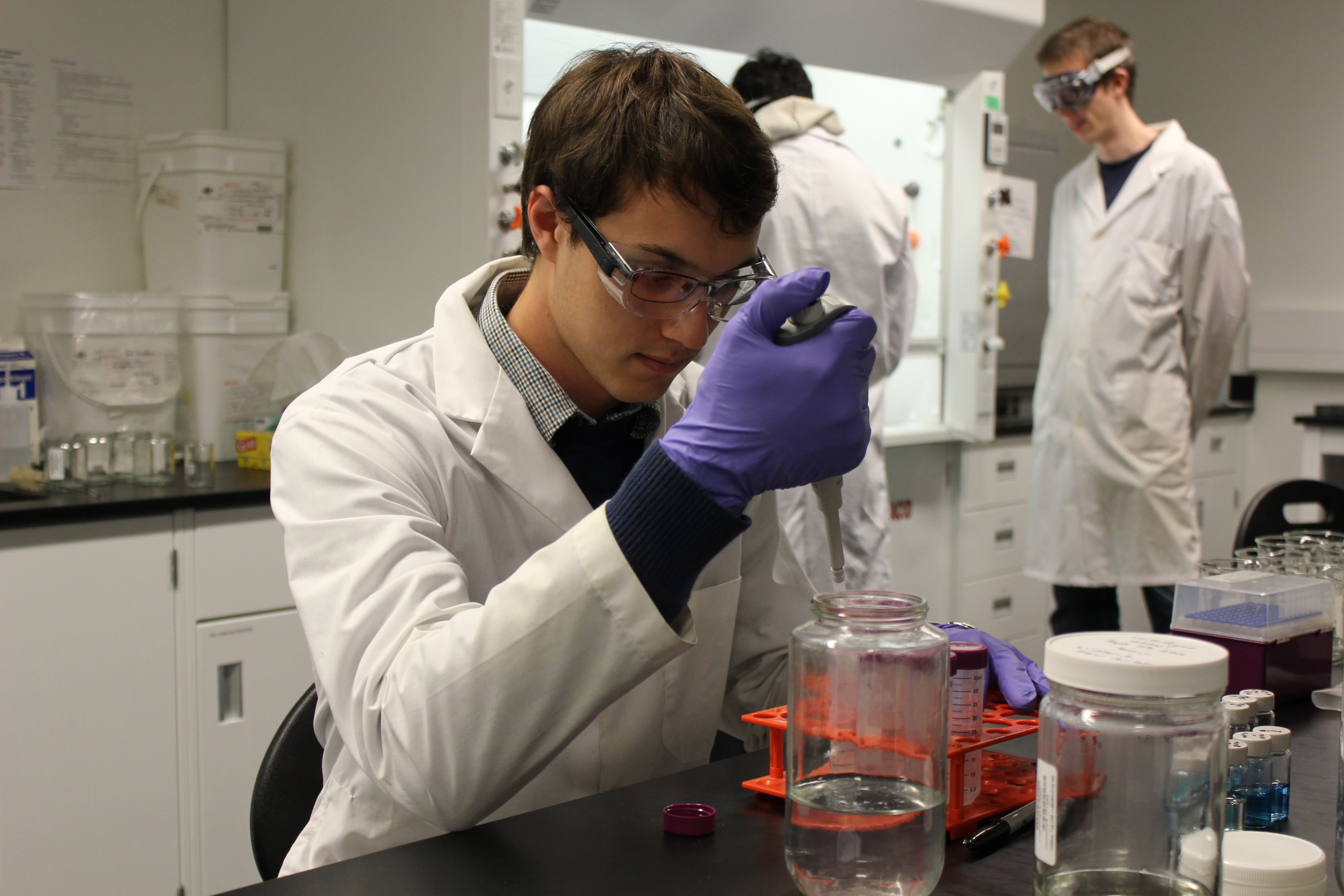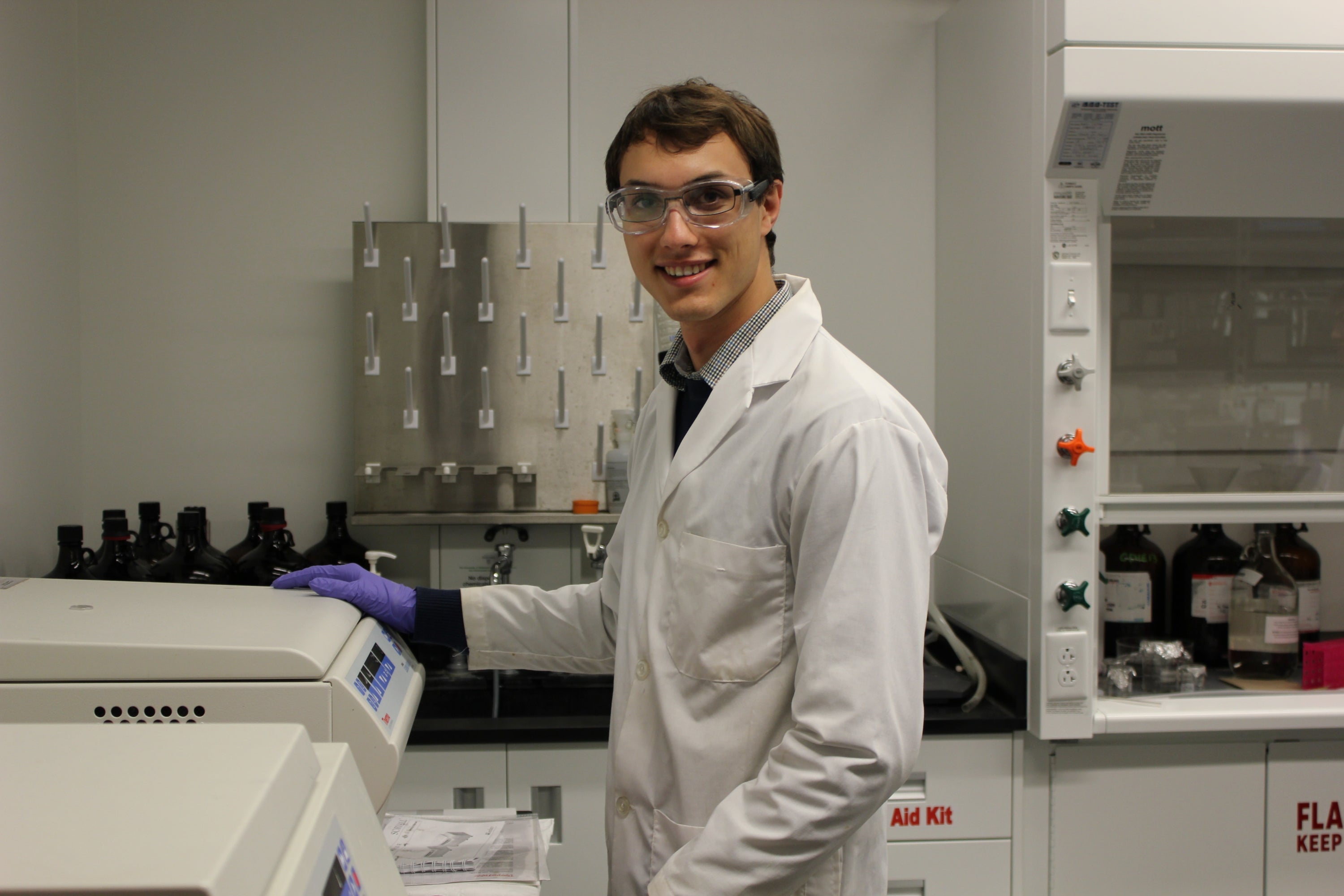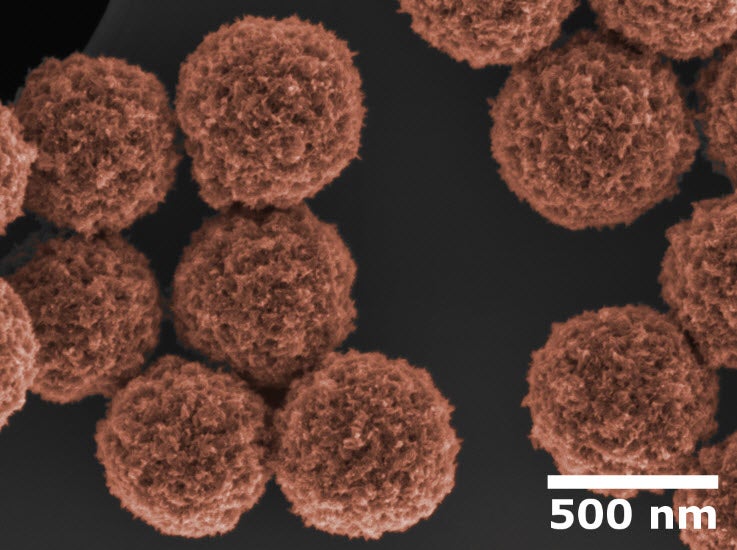
Naphthenic acids, the primary contaminant, are very toxic and difficult to remove. The nanocomposites I’m working on could provide a solution that is easy to deploy, fast acting and easy to recover. My primary goal is to see the technology that I’m developing resolve a real world problem. — Stuart Linley, nanotechnology engineering ’14 graduate and doctoral candidate
Vanier Canada Graduate Scholarship
Linley's research is getting noticed. He was recently awarded the prestigious Vanier Canada Graduate Scholarship that provides $150,000 of research funding from NSERC over three years. Linley says his mentor, Professor Frank Gu, Canada Research Chair in Nanotechnology Engineering, influenced his decision to stay at Waterloo and continue his post-graduate studies.
“Stuart is an outstanding student," says Gu. “I'm so glad he chose Waterloo to conduct his doctoral research.”
The admiration is mutual. “Frank is open to new ideas and he fosters experimentation. He gave me the opportunity to run my own project,” says Linley. “He has guided my research and he pushed me to apply for the Vanier scholarship.”

The co-op experience at Waterloo enabled me to work closely with Frank Gu and spend hours in the lab. Waterloo has excellent facilities, nowhere better in Canada. By being here I can draw information and expertise from research experts focused on water analysis, water treatment and nanomaterials design. With the overlap of these disciplines at Waterloo we are uniquely positioned to tackle this (wastewater) problem. — Stuart Linley, nanotechnology engineering ’14 graduate and doctoral candidate
More research and maybe entrepreneurship
While wastewater in tailings ponds is a major ecological problem, the municipal water system is also facing problems including contaminants from pharmaceuticals, sweeteners, birth control drugs and caffeine, which cannot be removed by conventional treatment. Linley's nanotechnology research could help solve this wastewater contamination problem.
Once he has completed his PhD, Linley wants to pursue real world implementation of his research through a business venture. One of his ideas — create a mobile purification unit that can be placed into any water system, anywhere in the world, to treat the new class of contaminants.

Magnetically recoverable nanoparticles (colourized) that are being developed in Prof. Gu’s lab to treat water. Image credits: Stuart Linley, Canadian Centre for Electron Microscopy.
Published
Linley’s recent paper “Recyclable Graphene Oxide-Supported Titanium Dioxide Photocatalysts with Tunable Properties” was the subject of an article published by the American Ceramic Society, Decaf drinking water made possible by nano titania, magnetite, and graphene oxide modules.
Stuart Linley, YingYing Liu, Carol J. Ptacek, David W. Blowes, and Frank X. Gu, “Recyclable Graphene Oxide-Supported Titanium Dioxide Photocatalysts with Tunable Properties” ACS Applied Materials and Interfaces, 2014, 6 (7), 4658–4668
Stuart Linley, Timothy Leshuk, Frank Gu, "Synthesis of hollow magnetic core-shell rattle-type nanostructures for use in water treatment", ACS Applied Materials and Interfaces, 2013, 5(7), 2540–2548
Timothy Leshuk, Stuart Linley, Frank Gu, "Hydrogenation processing of TiO2 nanoparticles", The Canadian Journal of Chemical Engineering, 2013, 91(5), 799–807
Timothy Leshuk, Stuart Linley, George Baxter, Frank Gu, "Mesoporous Hollow Sphere Titanium Dioxide Photocatalysts through Hydrothermal Silica Etching", ACS Applied Materials and Interfaces, 2012, 4(11), 6062-6070